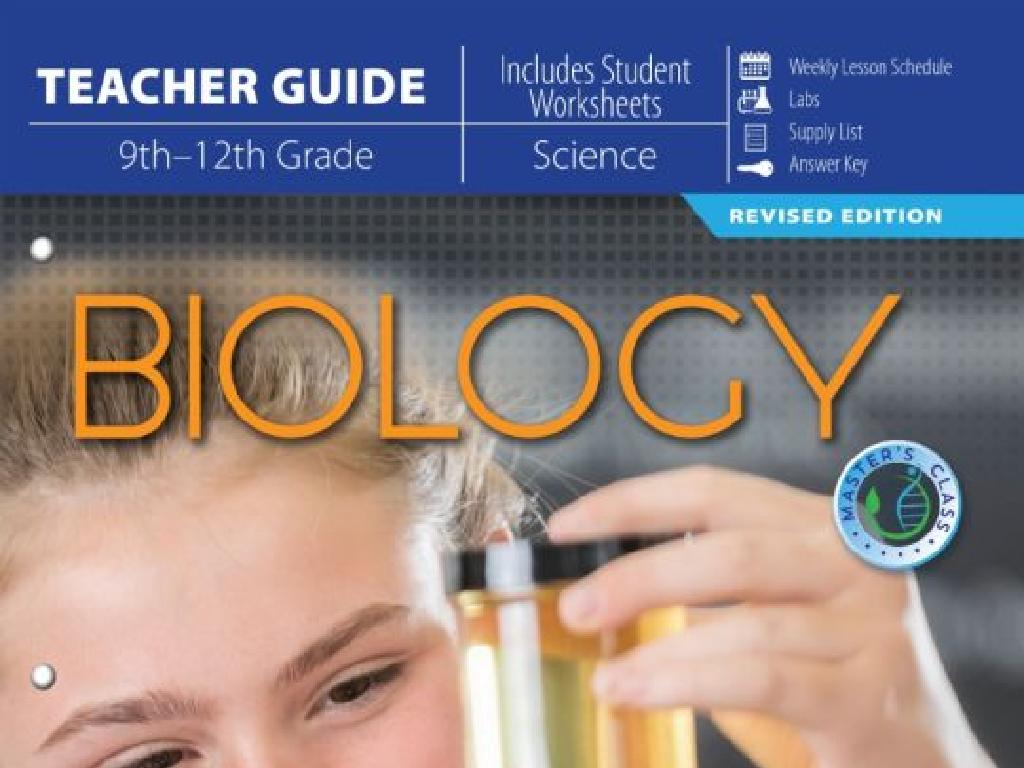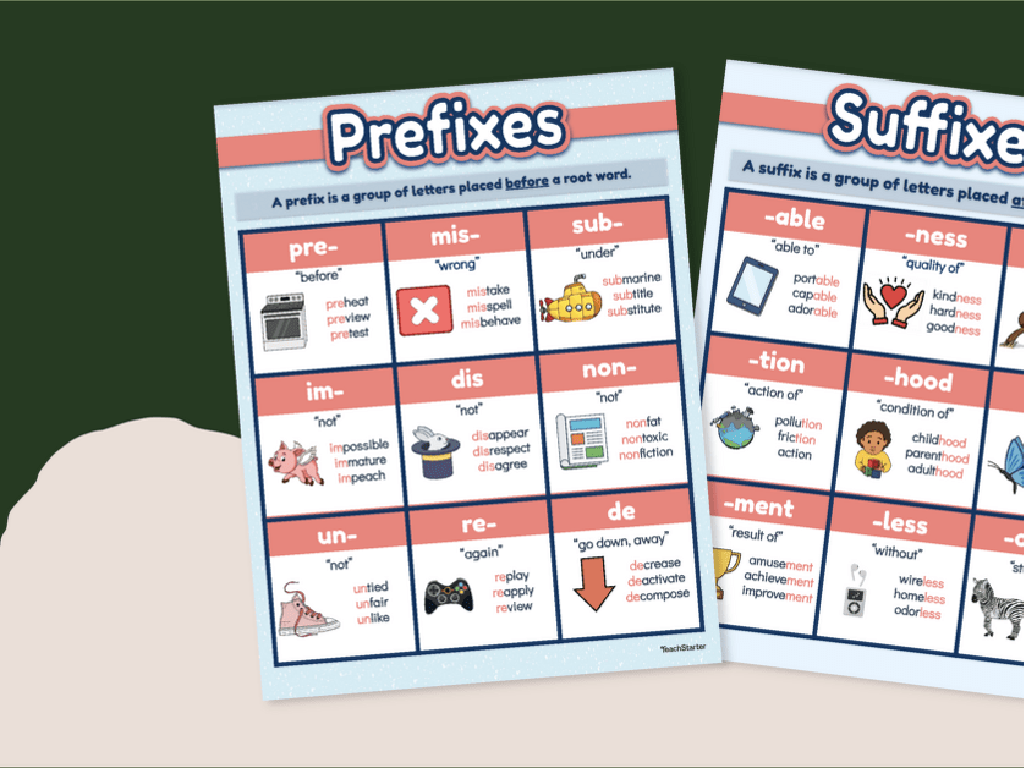Decide Whether Ellipses Are Used Appropriately
Subject: Language arts
Grade: Seventh grade
Topic: Dashes, Hyphens, And Ellipses
Please LOG IN to download the presentation. Access is available to registered users only.
View More Content
Mastering Ellipses in Punctuation
– What are ellipses?
– Ellipses are three dots (…) used to indicate omitted text.
– When to use ellipses
– Use ellipses for omissions, pauses, or unfinished thoughts.
– Examples of correct usage
– ‘I can’t believe she said…never mind, it’s not important.’
– Practice identifying ellipses
– We’ll review sentences to decide if ellipses are used properly.
|
This slide introduces the concept of ellipses and their role in written language. Ellipses are a set of three periods that serve various purposes, such as indicating the omission of words, creating suspense, or showing a trailing off of thought. Students will learn the appropriate contexts for using ellipses and see examples of their correct application. Emphasize that misuse can lead to confusion or misinterpretation of text. The practice activity will involve analyzing sentences to determine if ellipses are used correctly, reinforcing their understanding through application.
Understanding Ellipses in Writing
– Define ellipses
– Ellipses: a series of three dots …
– Ellipses representation
– Represented by three consecutive dots (…)
– Appropriate use of ellipses
– Used to indicate omitted text or a pause
– Ellipses in academic writing
– Use sparingly for quotes, omissions, or pauses
|
This slide introduces the concept of ellipses and their proper use in writing. An ellipsis, consisting of three dots, is a punctuation mark used to indicate where words have been left out of a quote, to create suspense, or to show an unfinished thought. It’s important for students to understand that while ellipses can be used creatively in narrative writing, they should be used judiciously in academic writing to avoid confusion. Teach students to recognize when text has been omitted for brevity or when an author wants to emphasize a pause or trailing off in dialogue. Encourage students to practice using ellipses by revising sentences to include them where appropriate.
The Purpose of Ellipses
– Indicate a pause or unfinished thought
– Used when a speaker stops abruptly or drifts off
– Show omission of words
– When quoting, ellipses replace irrelevant or omitted parts
– Create suspense in dialogue
– To build tension or anticipation in a story’s dialogue
– Signal a trailing off in speech
– When a character’s dialogue fades out or is interrupted
|
This slide aims to educate students on the correct usage of ellipses in writing. Ellipses can serve multiple purposes: they can represent a pause or an unfinished thought, perhaps when a speaker is unsure, hesitant, or emotional. They are also used to omit parts of a quote that are not necessary for the point being made, which is especially useful in research and reporting. In creative writing, ellipses can be used to create suspense or imply that a character’s speech trails off. It’s important for students to understand that ellipses should be used sparingly to maintain the impact of these effects. During the next class, students can practice identifying and using ellipses through examples from literature and their writing.
Ellipses in Action: Understanding Their Role
– Reading sentences with ellipses
– Notice how ellipses create suspense or show omission
– Discussing ellipses’ effect on perception
– How do ellipses make you feel? Curious, confused, or something else?
– Class activity: Identify ellipses’ purpose
– Look at examples and decide why the author used ellipses
– Understanding appropriate use of ellipses
|
This slide aims to engage students with the practical use of ellipses in writing. Begin by reading sentences that include ellipses to demonstrate how they can indicate a pause, omission, or unfinished thought. Discuss with the class how ellipses can affect the reader’s perception, potentially adding suspense or indicating hesitation. For the class activity, provide sentences with ellipses and ask students to identify the purpose behind the ellipses in each case. This will help them understand the appropriate use of ellipses in their writing. Encourage participation and critical thinking, and be ready to provide guidance and clarification as needed.
Common Misuses of Ellipses
– Avoid overusing ellipses
– Overuse can make writing seem incomplete or hesitant
– Ellipses are not always interchangeable
– Ellipses shouldn’t replace periods, commas, etc.
– Use ellipses with a clear purpose
– They indicate omission or unfinished thoughts
|
This slide aims to educate students on the proper use of ellipses and to avoid common mistakes. Overuse of ellipses can disrupt the flow of writing and give an impression of uncertainty or incomplete thoughts. It’s crucial to understand that ellipses have specific roles, such as indicating omitted material in a quotation or suggesting a trailing off of thought, and should not be used to replace standard punctuation like periods or commas. When using ellipses, students should have a clear reason, such as demonstrating a pause in dialogue or showing an omission. Encourage students to think before they punctuate and to revise their work to ensure ellipses are used correctly. Provide examples of both correct and incorrect usage to solidify understanding.
Practice Time: Mastering Ellipses
– Interactive exercise on ellipses
– Correct where ellipses are misused in sentences
– Group activity: rewrite with ellipses
– In groups, use ellipses correctly in new sentences
– Share your ellipses examples
– Present your sentences to the class
– Class discussion on ellipses use
– Discuss why ellipses are used in each case
|
This slide is designed for an interactive class activity focused on the proper use of ellipses. Begin with an exercise where students identify and correct sentences with ellipses used incorrectly. Then, have students work in groups to rewrite sentences, incorporating ellipses appropriately. Each group will share their sentences with the class, fostering a collaborative learning environment. Conclude with a discussion on the purpose of ellipses in writing, emphasizing their role in indicating omitted words, pauses in dialogue, or unfinished thoughts. Provide guidance and examples as needed, and encourage students to explain their reasoning during the discussion.
Class Activity: Ellipses Scavenger Hunt
– Search for ellipses in various texts
– Assess the correctness of each use
– Are ellipses replacing omitted words? Is the omission confusing?
– Prepare a presentation of your findings
– Share with the class and discuss
– Explain your reasoning for each example
|
This activity is designed to help students understand the practical use of ellipses in written language. Students will search for real-world examples of ellipses in different types of texts, such as books, magazines, and online articles. They will then evaluate whether the ellipses are used appropriately, according to the rules they’ve learned. For instance, ellipses should indicate omitted material or create a pause for effect without causing confusion. Students should prepare a brief presentation on their findings to share with the class. This will foster a discussion on the use of ellipses and allow students to learn from each other’s examples. As a teacher, be prepared to guide the discussion and clarify any misconceptions. Possible variations of the activity could include working in pairs, focusing on a specific type of text, or comparing the use of ellipses in formal versus informal writing.
Ellipses: Conclusion & Homework
– Recap ellipses usage rules
– Ellipses show omission, pause, or unfinished thoughts
– Homework: Craft a story/dialogue
– Create a narrative or conversation including ellipses
– Use ellipses correctly
– Ensure ellipses enhance the story without confusion
– Remember: Practice is key!
|
As we conclude our lesson on ellipses, it’s important to review their main uses: to indicate omitted material, to suggest a pause, or to show an unfinished thought. For homework, students are tasked with writing a short story or dialogue that incorporates ellipses in a way that demonstrates their understanding of these rules. This exercise will help solidify their knowledge through practical application. Encourage creativity but also remind them to review their work to ensure ellipses are used appropriately. In the next class, we can discuss some of their examples and provide feedback, reinforcing the concept that practice is essential for mastery.





